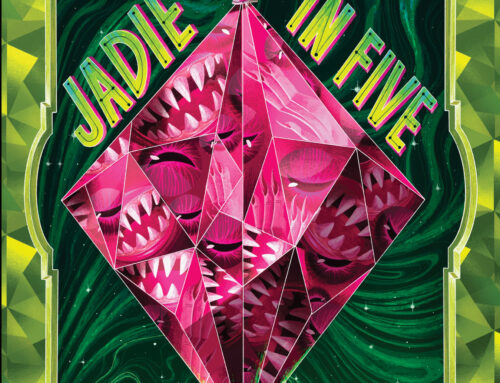Today’s interview with author Susan L. Meyer who’s second middle grade book this week! Skating With the Statue of Liberty is a companion book to her first historical fiction novel, Black Radishes. Take it away Susan.
Middle Grade Mafia: Your first MG novel, Black Radishes, was inspired by your father’s struggles and journey out of Nazi occupied France. My father was a boy in Lux embourg during WWII and experience many hardships, but he was very reluctant to talk about it. Did your father speak freely about his experience or did you have to persuade him?
embourg during WWII and experience many hardships, but he was very reluctant to talk about it. Did your father speak freely about his experience or did you have to persuade him?
Susan L. Meyer: No, my father didn’t speak freely about it either. I get the distinct impression, from memoirs I’ve read and people I’ve talked to, that after coming to America, Jews especially were discouraged from talking about what they had experienced during the war. There was an American reluctance to hear about what had happened to the Jews, and a feeling of “Yes, we all suffered, don’t complain, get on with it.” There seems to have been a generational difference too. I feel that people of that generation were raised not to talk much about or dwell on their own suffering.
But from time to time my father did tell us kids (I’m one of six) little stories, often funny stories, about his childhood. Some of them made their way into Black Radishes (like the story of the beetle spitballs) and Skating With the Statue of Liberty (like the story of the mean German music teacher he encountered at his first American school).
To learn more about his life, when I was working on the books, I would gently asked him just one or two questions at a time, because it was hard for him to talk about that part of his life.
Once, my father, who was a math professor at Johns Hopkins, told me that he had realized that day (it must have been November 2, 1992), as he was walking to teach a class, that it was the 50th anniversary of his arrival in America, and that he thought about telling that to his students. He didn’t—and I said, “You should have! It’s something they would have remembered long after they forgot everything else about that day’s class!”
He was rather a reserved person, though. And I was worried about whether he would mind about how much of his story I had used in Black Radishes, so I deliberately made some things quite different. But after he read it (which he was only able to bring himself to do when it was in advance copy form, because it was hard for him to relive those experiences), he told me it was “a great book.” That meant a great deal to me, because he didn’t praise us kids lightly. I think he was quite glad I wrote it.
MGM: This is a great book for classroom discussions. Have you received any reactions or questions by students that surprised you?
SM: I haven’t spoken to any kids about Skating With the Statue of Liberty yet, because it only comes out in April, but about Black Radishes, yes, definitely. One group of middle-school students I connected with included many immigrants from Latin America. A number of them commented that the border crossing scenes (between Nazi-occupied France and unoccupied France) were really stressful for them, because of their own border-crossing experiences. Some were worried at the end of Black Radishes about whether Gustave would make it safely to America.
I was both happy and touched that they felt such a connection with their own experiences. I hope that when they and other recent immigrant kids read Skating With the Statue of Liberty that Gustave’s experiences as an immigrant in New York—not speaking the language or playing the same sports or wearing the right clothes, not understanding the way boys and girls interact, making embarrassing mistakes and struggling to make friends and to understand the implicit “rules” of this new life—will also resonate with their experiences.
MGM: Your companion book, Skating With the Statue of Liberty, follows Gustave on his new adventure to New York City where he discovers discrimination also exists in the U.S.? What would you like readers to takeaway from the story?
SM: To me, most of all, it is a story about mixed feelings about America. America has saved Gustave’s life. But it is painfully imperfect also, as he learns through his friendship with September Rose, an African-American girl, and the racism in America that he notices all the more glaringly because of that friendship. He also encounters anti-Semitism here. It is much milder than what he experienced in Europe, but it still exists. Yet at the same time, he is deeply grateful to this country and he knows that his future is here.
It is also a story about how much immigrants go through and how hard life can be and the quiet heroism there is in going on, finding a way through persistence and friendship to make a happy life, even when circumstances are far from ideal.
MGM: Was writing the second book any easier than writing the first? How was it different?
SM: It was SO MUCH HARDER! I really struggled with this book. I think it is partly because it’s a less intrinsically dramatic story. Gustave’s family escapes from the Nazis in Black Radishes. In this book, they engage in the quieter but equally heroic struggle to make a new life for themselves in America. Showing the power of that experience was one challenge of writing this book.
Another challenge was that Gustave doesn’t speak English well at the beginning of the novel, and it is told through a close third-person point of view. So because I could only convey what he was experiencing, until his English comprehension got better, I couldn’t use much dialogue. In the early school scenes, he only understands a few words here and there, and understands the rest only through tone of voice and watching people’s body language.
Then it was hard to write this book too, because I was writing it through my father’s
illness and death and my grieving. I badly wanted the book to be worthy of him, which was sometimes paralyzing. So there were big emotional challenges too. Some of my grief bleeds into the scene where Gustave stands on the bridge thinking about Marcel and what is happening in Europe.
MGM: Will the books be translated into different languages? If so, how do you think it will be received?
SM: I don’t know yet. I really hope so. Black Radishes was translated into German and is in the process of being translated into Chinese. I’m still really hoping for a translation into French for that novel, because it would be like a coming home for that book.
Both offers to publish Black Radishes in other languages happened after it was published. So we’ll see what happens with Skating With the Statue of Liberty. Fingers crossed!
It is tremendously exciting for me to know that a book of mine is being read around the world, in places I’ve never been. Black Radishes was a finalist in a “Reader’s Choice” award in South Korea, and I got an email from a boy in Vienna who had read Black Radishes. A few months ago, a girl in Venezuela who had read Black Radishes was visiting her grandmother in Massachusetts and arranged to meet with me and interview me. That was very touching—and she was a very impressive eleven-year-old!
For more about Susan L. Meyer, visit her website.
Don’t miss out on great content from the Mafia! Have agency news, author interviews, book reviews, etc. delivered straight to your in-box by entering your email address in the Subscribe Form at the top/right of the page.






Leave A Comment